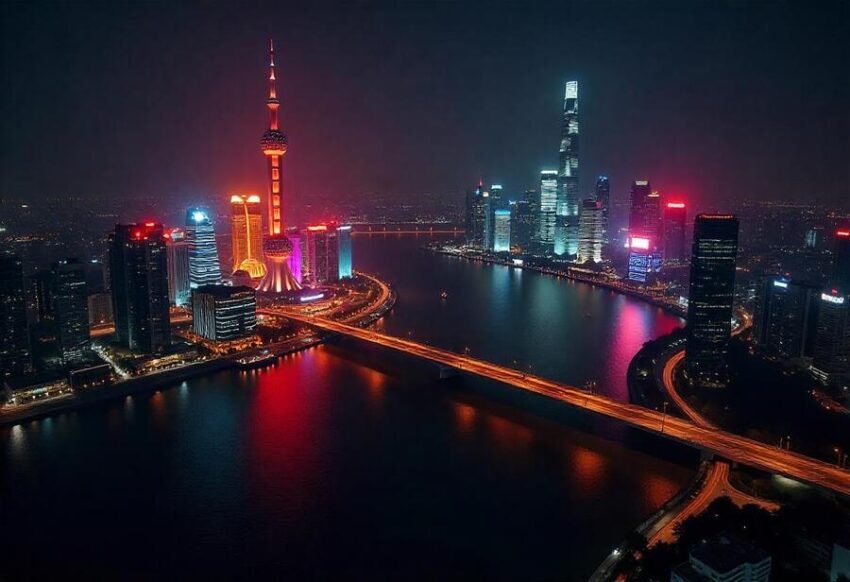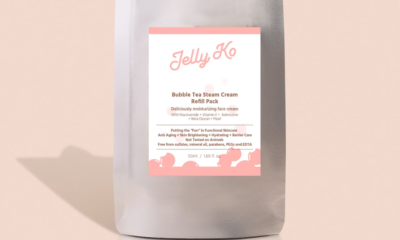Brand Stories
China’s Tourism Revival Powers Rapid Growth For Global Hotel Brands, Captivating Travelers From Europe, Asia, The Middle East, And Latin America

Thursday, June 12, 2025
China’s tourism revival is driving an unprecedented surge in global hotel brand expansions, as international travelers from Europe, Asia, the Middle East, and Latin America flock to the country. This rapid growth is fueled by the country’s revitalized tourism policies, streamlined visa processes, and a growing demand for both leisure and business travel. As China strengthens its position as a leading global destination, international hotel chains are capitalizing on the increasing influx of visitors by expanding their presence in key cities and regions, offering differentiated experiences tailored to the diverse needs of global travelers. The rising global interest is a testament to China’s appeal, further accelerating the growth of its hospitality sector.
China’s tourism landscape is experiencing a transformative boom, driven by a significant rise in inbound travel that is propelling the expansion of global hotel brands across the country. Backed by favorable government policies, streamlined visa processes, and a resurgent global demand for travel, this rapid growth is reshaping the nation’s tourism sector and playing a crucial role in its post-pandemic recovery and broader economic diversification.
In the first quarter of 2025, over 9 million international visitors flocked to China, reflecting a remarkable year-on-year growth of more than 40%. This surge can be attributed to the country’s renewed focus on enhancing its tourism offerings, making it an increasingly attractive destination for travelers worldwide.
International Hotel Brands Respond to Rising Demand
The substantial uptick in inbound tourism has prompted global hotel chains to ramp up their investments and expand their presence in China’s most sought-after destinations. As the demand for both leisure and business travel continues to rise, foreign hotel operators are adjusting their strategies to better serve the needs of international visitors.
For instance, Hilton has now expanded to 840 hotels across Greater China as of Q1 2025, with plans for further growth. The brand has reported a significant recovery in inbound bookings, surpassing pre-pandemic levels during key travel periods, signaling a robust return of international travelers to China.
Additionally, Hyatt’s luxury brand Alila recently launched a new cliffside resort on Dong’ao Island in Guangdong Province. The resort saw nearly 90% occupancy during the May Day and Dragon Boat Festival holidays, demonstrating the continued high demand from affluent travelers seeking luxurious, coastal experiences.
These developments underscore a larger trend in the hospitality industry, where global hotel chains are increasingly focusing on properties designed to cater to the surging demand from inbound tourists. The industry is shifting toward delivering unique and culturally integrated experiences that meet the needs of both leisure and business travelers.
Government Reforms Fuel Tourism Growth
A key factor driving China’s tourism boom is the Chinese government’s proactive reform policies, which have made the country more accessible to international visitors. Key changes to visa and entry requirements in 2024 and 2025 have played a pivotal role in attracting more foreign tourists.
Recent reforms include:
- Expanding the visa-free policy to include 47 countries across Europe, Asia, the Middle East, and Latin America.
- Extending transit visa stays to up to 10 days at 60 airports and in 24 provinces.
- Easing entry requirements for both group and individual tourists.
- Reducing the minimum spend for VAT rebates from 500 yuan to 200 yuan.
- Enabling international visitors to use digital wallets and simplified payment systems supported by major financial institutions.
These changes have lowered barriers for international travelers, leading to increased tourism flows to not only China’s major cities but also smaller cities like Zhuhai, Chengdu, and Hangzhou. These cities are emerging as key destinations for luxury and experience-based tourism, benefiting from the overall rise in visitor numbers.
Economic Impact and Future Growth Potential
Experts predict that China’s tourism sector will generate over 1 trillion yuan in revenue by 2026, supporting the nation’s transition to a service-based economy. Tourism is now seen as a vital pillar of economic growth, contributing significantly to both domestic consumption and local economies.
The tourism sector is playing an essential role in:
- Stimulating local economies through increased travel-related spending.
- Attracting foreign direct investment, particularly in hospitality, food & beverage, and transportation.
- Enhancing China’s global soft power, fostering cultural exchange and boosting international influence.
Evidence of the growing international interest in China is seen in the sharp rise in hotel search volumes during the 2025 Dragon Boat Festival, with figures more than doubling compared to 2024. Furthermore, from January to April 2025, more than 18,000 new foreign-invested enterprises were established in China, further highlighting the country’s economic appeal.
Bright Future for International Hotel Brands
With the influx of international visitors, strong government incentives, and an evolving hospitality landscape, China has become one of the most attractive markets for international hotel brands. Hotels that can adapt effectively to local demands, embrace digital innovations, and align with the government’s tourism policies are poised to thrive.
Key investment opportunities are expected to arise in:
- Major urban centers like Beijing, Shanghai, and Shenzhen, which are popular for business and luxury tourism.
- Secondary leisure destinations such as Guilin, Yunnan, and Hainan, which are increasingly appealing to experience-seeking travelers.
- Cross-border MICE (Meetings, Incentives, Conferences, and Exhibitions) and wellness tourism, catering to high-end business visitors and wellness-focused travelers.
As China continues to strengthen its position as a global tourism powerhouse, the expanding hospitality sector will play a crucial role in the country’s broader economic diversification. International hotel brands are strategically positioned to capitalize on this growth, contributing to China’s economic objectives and cementing the country’s place as a leading destination for global travelers.der economic objectives, further cementing the country’s appeal on the world stage.
Brand Stories
When Trouble Calls, Virginia Beach, Va., Lets AI Answer

When someone calls 911, every second matters. But what about the thousands of interactions that aren’t true emergencies? A new AI tool is helping Virginia Beach, Va., manage those calls, giving dispatchers the breathing room they need to focus on life-or-death situations.
That shift is happening through the city’s use of Amazon Connect, bringing artificial intelligence and natural language processing into the nonemergency call workflow to help modernize how public safety communications are handled. The change essentially came from necessity, as high call volumes and a smaller workforce pushed the municipality’s Emergency Communications and Citizen Services Department to find innovative ways to manage increasing demand.
“We actually process more nonemergency calls per year,” Jada Lee, director for Emergency Communications and Citizen Services at Virginia Beach, said. “The same people in my department that process 911 calls on a daily basis are also responsible for processing 5,000 nonemergency calls.”
Instead of tying up 911-trained dispatchers with routine questions or ambiguous calls, the city’s 10-digit nonemergency number now routes through Amazon Connect. Callers are greeted with prompts, including a high-priority transfer option for true emergencies. From there, they speak naturally to explain their reason for calling.
“The Amazon Connect system can then translate those stated intents into specific workflows that we’ve configured inside of Connect,” Josh Nelson, Virginia Beach IT solutions manager, said. “It will either transfer the call to a queue, provide more information, send a text message, or it will transfer them to another city department that’s more appropriate.”
Since its implementation in April 2024, the technology’s impact on the department has been hard to miss. In an average month, the solution either completely handles nearly half of incoming calls to Amazon Connect, transfers them to the appropriate city department, or otherwise diverts them from 911 center agents. In actual numbers, that accounts for 44 to 45 percent of calls.
“When you look year over year, that translates to thousands fewer calls for live agents based on your average call duration, which works out to over 900 hours of continuous talk time,” he said. “That’s just April to December 2023 versus April to December 2024.”
The measurable impact on call volume had a noticeable effect on the day-to-day environment in the communications center. With fewer nonemergency calls interrupting the workflow, morale improved as the pressure of growing queues eased — so it was not surprising, department leaders said, that staff buy-in came quickly.
“They were extremely excited about not having to spend as much time processing nonemergency calls,” Lee said. “Those calls typically take longer, and our staff gets very anxious when they see the 911 queue start to build.”
To make the initial transition to Amazon Connect smooth, clear communication with the public was essential, especially to address early misconceptions. Before launch, the team worked to inform residents on how it worked, and what it would and wouldn’t do. That outreach helped ease concerns and build trust in the technology.
Residents, Nelson said, have responded well, especially when it comes to wait times and convenience. The central benefit to the public, he said, is that they’re not stuck in a queue waiting for a live person to tell them something that they could have obtained in other ways.
Buoyed by the system’s success, Virginia Beach is already planning to expand. Their team, Nelson says, has identified several other workflows and use cases and is looking into more, specifically potential integrations with 311 and the city’s Salesforce customer relationship management. Future use cases could focus on anything from towed vehicle inquiries to seasonal high-volume scenarios like fireworks complaints on July Fourth.
But while automation is making a difference in handling nonemergency calls, the goal isn’t to entirely replace humans in safety communications.
“We’re not trying to keep people from speaking to an agent,” Nelson said. “We make it very easy for people to get through to a live person, but we’re saving callers’ time.”
Finding the right mix of technology and the personal touch was part of the challenge, and not everyone was on board right away. For Lee, bringing AI into the picture wasn’t something she initially planned or expected. The director had some doubts early on about whether automation might make the experience feel too cold or impersonal to callers.
“I never thought that I would say, ‘yes, I want AI in my center,’” she said. “But people today, if they don’t have to talk to an actual person and they can have their needs met, then that’s what they prefer to do.”
And in a field grappling with national staffing shortages, Lee said she now sees this kind of technology as essential.
“Dispatch centers across the country are going to begin really looking at how they can use technology software to assist them in creating additional efficiencies in their day-to-day operations,” she said. “If someone is having a true emergency, yes, they want a human being on the other end of the phone. But in other areas, AI is definitely going to help.”
Brand Stories
PR News | Why the Media, Influencers and Brands Flocked to Substack

| Laura Davidson (L) and Dana Curatolo co-authored this article. |
Everyone seems to be launching a newsletter these days. What began a couple of years ago as a wave of respected journalists creating Substack newsletters to connect directly with PR professionals has evolved into something much broader. In 2025, we’re seeing not just media insiders, but also top-tier travel influencers, new tastemakers, luxury hotel brands and even private jet companies leveraging Substack as a direct channel to speak to their audiences.
This surge is more than a trend—it signals a fundamental shift in how brands build community, shape narrative and stay top-of-mind in an increasingly fragmented media landscape.
Substack is no longer a niche media tool. It has emerged as a powerful content platform for curated storytelling, cultural perspective and brand intimacy—especially in the luxury travel space, where experience and emotion drive engagement. According to Business Insider, and with more than 35 million active subscriptions and two million paid, Substack offers unparalleled reach and loyalty. Open rates often triple those of traditional social media platforms, making it a compelling channel for thoughtful, long-form engagement with audiences who want to hear from you.
In the past, luxury travel brands relied almost exclusively on leading traditional print and digital outlets like Condé Nast Traveler, Robb Report and Travel + Leisure to tell their stories. These glossy features still hold immense sway—and we love working with them—but as editorial teams streamline and legacy titles narrow their focus, many PR professionals are looking elsewhere to round out their media mix.
Newsletters like those on Substack offer an elegant solution: a direct-to-inbox format with a highly engaged and often loyal readership. It’s not just about eyeballs—it’s about intent. When someone subscribes to a newsletter, they’re actively choosing to invite that voice into their daily or weekly rhythm. That kind of permission-based content is gold in a world of dwindling attention spans.
Notably, travel journalists and editors are leading the charge. Writers like Yolanda Edwards (a Substack veteran), Sarah Khan, Laura Itzkowitz and more—are carving out spaces to share deeper, more personal travel commentary—often with greater freedom and editorial richness than traditional outlets allow. Whether they’re writing about under-the-radar design hotels in Italy or reflecting on the future of luxury hospitality, the tone is thoughtful, refined and often more honest than a glossy spread permits.
It’s not just journalists. Influential voices in fashion, design, hospitality and culture are also finding new creative freedom on the platform. Claudia Williams writes about style and aesthetics in a way that interweaves her global travel experiences and with a sensibility that resonates with culinary insiders and brand marketers alike.
And the brands themselves are catching on. Luxury hotels, airlines, cruise lines and private travel providers are beginning to use the platform either directly or through collaborations to deepen connections with their most discerning guests. Where once a property might have relied solely on third-party media validation, today they’re commissioning bespoke newsletter content, partnering with newsletter authors on immersive press trips, or even quietly launching branded newsletters of their own—disguised as editorial-first platforms.
Substack newsletters are uniquely effective at driving not just awareness but meaningful engagement. Unlike the often-broad appeal of a magazine feature, a well-crafted newsletter post can prompt direct action—whether it’s bookings, inquiries, or being shared within trusted circles. With a tone that’s more personal and authentic, newsletters resonate with today’s luxury consumers who engage with content selectively, thoughtfully and on their own terms.
So, where is this all going?
What’s next for this space is an exciting evolution of platform diversity and community-first storytelling. We’re seeing new players like The Window Seat by Tori Simokov emerge—blending highly curated travel content with authentic cultural perspective and an editorial voice that resonates with a younger, experience-driven luxury traveler. Tori, a seasoned creative and travel strategist, launched The Window Seat as a Substack dedicated to exploring travel through the lens of storytelling, design and discovery.
We recently hosted her at Park Hyatt New York to experience the new Petrossian tasting experience—an elevated, caviar-forward concept for both guests and locals. The resulting coverage was elegant and personal. It translated to increased awareness and conversation around the initiative among a smaller but highly engaged collective of affluent New Yorkers and global tastemakers passing through the city. The power of that post wasn’t in reach, but in relevance.
This is the kind of storytelling PR professionals should be paying attention to. It’s not about replacing traditional media—it’s about expanding the toolkit. Substack isn’t just another platform to pitch. It’s a space to build relationships, invest in voices that align with your brand’s values and experiment with new formats and collaborations that feel distinctly modern.
What’s especially notable is that these newsletters are being read by the exact audience luxury travel brands want to reach: curious, discerning, culturally plugged-in readers who value quality over quantity. And in many cases, they’re being forwarded, shared and discussed far beyond their initial inbox delivery.
For brands, this presents an opportunity to think more holistically about media strategy. Rather than chasing shrinking column inches or vying for viral moments on social, why not invest in depth, trust and intentionality? Partnering with newsletter authors—whether through experiences, collaborations, or content swaps—can yield long-tail results that extend well beyond a single feature.
In an era where consumers are increasingly skeptical of advertising and overwhelmed by content, newsletters represent a refreshing return to slow media. And in the luxury travel space, where trust, aspiration and emotional connection are everything, that’s an opportunity too powerful to ignore.
***
Laura Davidson is CEO and Founder of LDPR. Dana Curatolo is Senior Vice President at LDPR.
Brand Stories
Bloom Hotels: A Modern Vision of Hospitality Redefining Travel
Bloom Hotels represents a modern vision of hospitality, redefining travel for a new generation with innovative design, smart comfort, and memorable stays.

In a rapidly evolving hospitality landscape, Bloom Hotels stands as a testament to the changing preferences of today’s travelers. As modern tourism leans toward personalized, sustainable, and experience-driven stays, Bloom Hotels has successfully navigated the intersection of comfort, innovation and local connection, creating an environment that feels both familiar and forward-thinking.
For those seeking not just a place to stay but an experience that resonates beyond the conventional, Bloom Hotels offers a distinctive solution. Here’s why Bloom Hotels has become a top choice for travelers who value simplicity, sustainability and seamless integration of technology.
A Fresh Take on Modern Hospitality
Bloom Hotels embodies a refreshingly modern approach to hospitality, breaking away from the trappings of traditional luxury without compromising on quality or comfort. Its minimalistic yet functional design speaks to the evolving tastes of today’s traveler, who values efficiency and thoughtful aesthetics. Each location, while adhering to the Bloom Hotels brand’s consistent ethos, integrates elements that reflect its environment, creating spaces that feel grounded yet innovative.
Rooms are designed to provide both functionality and relaxation offering features like ergonomic beds, ample workspace and high-speed internet connectivity. Guests are greeted with a streamlined experience that prioritizes ease and accessibility, from swift check-ins to intuitive in-room technology. It’s not about excess, but about providing what’s necessary for a comfortable, efficient stay.
The Power of Personalization
Millennials and Gen Z have rewritten the rules of modern travel, prioritizing personal growth and experience over traditional luxury. Bloom Hotels has recognized this shift and catered to these evolving demands by offering highly personalized experiences that go beyond the ordinary.
Guests can curate their own experiences, from choosing the type of room that best suits their needs to customizing in-house services. Whether it’s a wellness-focused retreat or a city break with a local cultural immersion, Bloom Hotels provides a range of options that reflect the diverse needs of today’s travelers.
For business travelers, the hotel’s seamless integration of technology allows for swift, efficient stays, with features like digital check-ins, 24/7 support, and flexible workspace arrangements. Leisure guests, on the other hand, can explore local recommendations curated by the hotel’s expert staff, enhancing the connection to the destination.
Sustainable and Thoughtful Operations
In a time when sustainability is no longer a luxury but a necessity, Bloom Hotels has committed to reducing its environmental footprint. The brand’s approach to sustainability is both practical and impactful. From energy-efficient lighting and water conservation measures to the use of locally sourced materials and eco-friendly cleaning products, every aspect of Bloom Hotels’ operations reflects its dedication to minimizing environmental impact.
Bloom Hotels also places a significant focus on the local community, integrating regional elements into the guest experience and ensuring that tourism benefits the areas it serves. By partnering with local artisans, sourcing produce from nearby markets, and supporting regional causes, Bloom Hotels creates a sustainable ecosystem that supports both travelers and the local community.
Technology That Enhances, Not Distracts
The modern traveler demands convenience and personalization, and Bloom Hotels meets these expectations with cutting-edge technology. Yet, unlike many hotel chains that overcomplicate guest services with excessive tech, Bloom Hotels takes a measured approach, using technology to enhance the guest experience without overwhelming it.
The hotel’s mobile app allows for easy booking, check-in, and room customization, while in-room technology provides guests with control over lighting, temperature, and entertainment options. By integrating technology in a way that is intuitive and user-friendly, Bloom Hotels enables guests to focus on what truly matters whether that’s work, relaxation or exploration.
Local Connection with a Global Reach
Bloom Hotels thrives on its ability to offer guests a local experience without sacrificing international standards. Whether you’re in the heart of a bustling city or a more tranquil setting, Bloom Hotels ensures that each location captures the essence of its surroundings.
By offering curated local experiences, from guided tours to culinary experiences, Bloom Hotels gives travelers an authentic connection to the region while maintaining the high standards of service they expect. It’s this blend of global consistency and local flavor that sets Bloom Hotels apart in a crowded hospitality market.
The Future of Hospitality
As we look ahead to 2025 and beyond, the expectations of the modern traveler continue to evolve. Bloom Hotels is well-positioned to meet these demands, offering a seamless blend of comfort, innovation and sustainability. For travelers who value simplicity, authenticity, and thoughtful design, Bloom Hotels represents a new standard in the hospitality industry a hotel experience that is both grounded and forward-thinking.
In an era where travelers are seeking not just luxury but authenticity and deeper connections, Bloom Hotels offers a compelling model for how hospitality can evolve to meet the changing needs of a new generation of global citizens.
Disclosure: The author has no direct affiliation with Bloom Hotels, nor does this article include any sponsored content or promotional material. The opinions expressed in this article are based on publicly available information and are intended to provide an objective overview of Bloom Hotels and its services.
-

 Brand Stories20 hours ago
Brand Stories20 hours agoBloom Hotels: A Modern Vision of Hospitality Redefining Travel
-

 Destinations & Things To Do2 days ago
Destinations & Things To Do2 days agoUntouched Destinations: Stunning Hidden Gems You Must Visit
-

 AI in Travel2 days ago
AI in Travel2 days agoAI Travel Revolution: Must-Have Guide to the Best Experience
-

 Brand Stories2 weeks ago
Brand Stories2 weeks agoVoice AI Startup ElevenLabs Plans to Add Hubs Around the World
-

 Brand Stories2 weeks ago
Brand Stories2 weeks agoHow Elon Musk’s rogue Grok chatbot became a cautionary AI tale
-

 Asia Travel Pulse2 weeks ago
Asia Travel Pulse2 weeks agoLooking For Adventure In Asia? Here Are 7 Epic Destinations You Need To Experience At Least Once – Zee News
-

 AI in Travel2 weeks ago
AI in Travel2 weeks ago‘Will AI take my job?’ A trip to a Beijing fortune-telling bar to see what lies ahead | China
-

 Brand Stories2 weeks ago
Brand Stories2 weeks agoChatGPT — the last of the great romantics
-

 Brand Stories2 weeks ago
Brand Stories2 weeks agoHumans must remain at the heart of the AI story
-

 The Travel Revolution of Our Era1 month ago
The Travel Revolution of Our Era1 month agoCheQin.ai Redefines Hotel Booking with Zero-Commission Model













